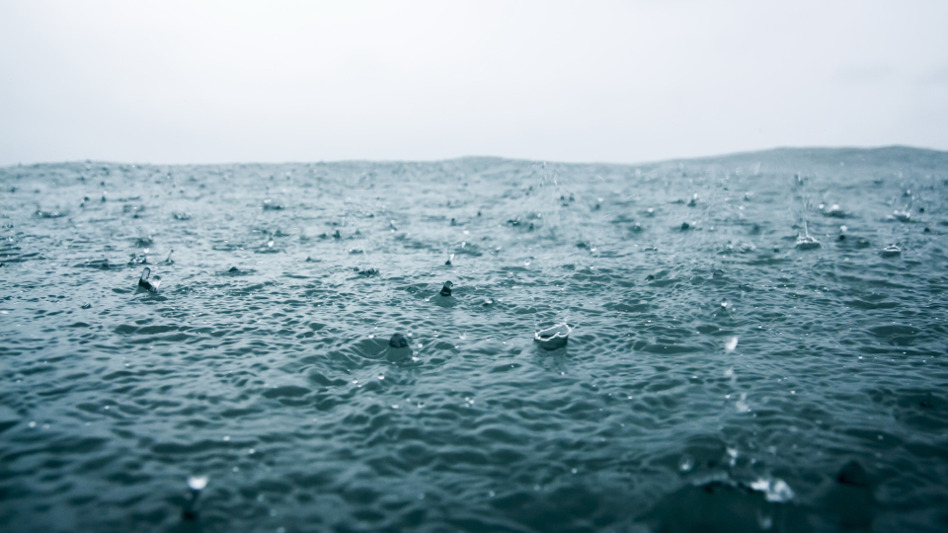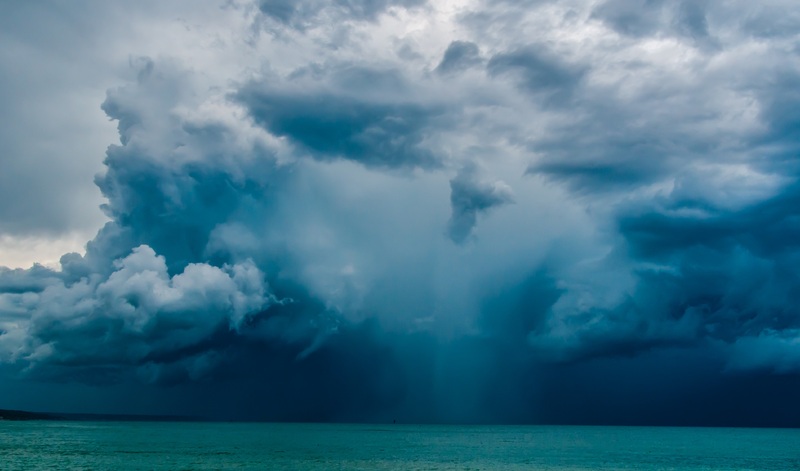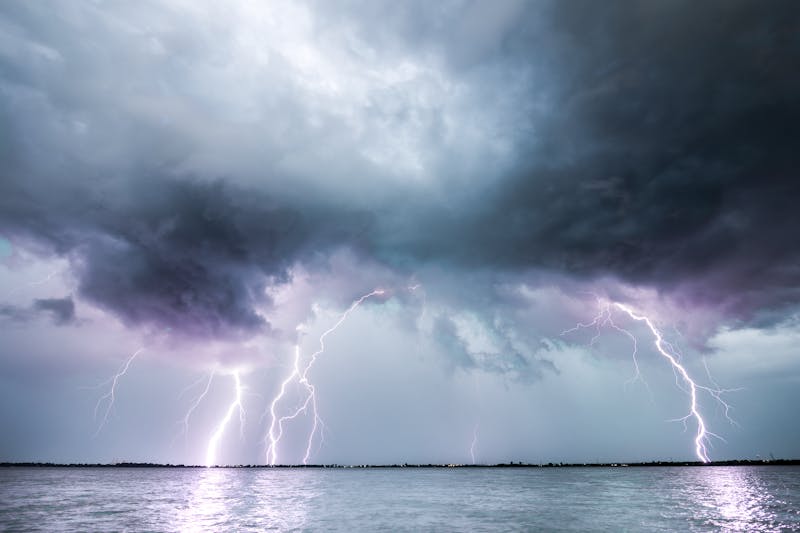Weather conditions significantly impact dive safety and require thorough evaluation before entering the water. While light rain presents minimal risk underwater, major storms and lightning create dangerous diving conditions. Successful dive planning hinges on analyzing how topside weather affects underwater conditions. This analysis determines whether to proceed with or cancel diving operations.
Key Takeaways
- Moderate precipitation is manageable for submerged activities, though viz can deteriorate from surface chop and suspended particles.
- Lightning events make diving lethal – electrical conductivity through H2O creates life-threatening conditions for aquanauts.
- Rough weather generates surge, rips, and problematic site access. DMs and dive operators should evaluate conditions before deployment.
- Muck diving and drift diving become challenging in rain, but wall dives and reef exploration at depth maintain decent viz.
- Constant surface monitoring, thorough briefings, and direct supervision from divemasters are vital for inclement weather protocols.
Understanding Rain’s Impact on Scuba Diving
Rain’s Impact on Scuba Diving
Precipitation affects underwater conditions for divers in several ways. In shallow depths, rain diminishes viz (visibility) by stirring bottom sediment and creating surface runoff. While deep water diving remains stable, the thermocline often experiences turbidity. Once underwater, light rain actually helps clear particulates from the water column, improving visibility in some cases.
Dive sites with geological barriers like wall dives and reef formations maintain better water clarity during rainfall versus sandy bottom locations. Tech divers typically pack backup illumination gear including primary torches and safety lights for low-viz conditions. Strategic site selection and proper dive planning ensure successful descents during inclement weather.

Safety Risks of Diving During Storms
Diving during storms creates notable risks for both recreational and technical divers. Surface conditions and underwater visibility require careful evaluation before any descent. Local weather monitoring throughout the day helps anticipate dangerous shifts in conditions.
Storm-associated hazards:
- Lightning conductivity through the water column
- Surge and rip currents affecting buoyancy control
- Limited viz from rain-stirred particulate matter
- Surface chop hampering entry/exit points and safety stops
- Compass navigation challenges due to current drift
- Risk of buddy separation in low-vis conditions
Essential gear considerations:
- Redundant dive computers
- Surface marker buoys (SMBs)
- Underwater signaling devices
- Dive lights with backup
- Reef hooks for current holds
Pre-dive protocols:
- Monitor marine forecasts
- Check tidal movements
- Brief dive operators
- Set conservative NDLs
- Plan alternate exit points
Bottom line: Storm diving requires advanced certification, proper planning, and strict adherence to safety protocols.

Lightning Hazards and Underwater Diving
Lightning Safety for Aquatic Activities
Electrical hazards pose risks to aquanauts and surface swimmers during thunderstorms. While submersion at 20-30 feet provides a safety buffer, divers near the surface remain vulnerable to strikes that can travel up to 15 miles from storm cells. Metal dive equipment significantly increases electrical conductivity risks during underwater operations.
| Safety Factor | Risk Level | Protective Measure |
|---|---|---|
| Surface Exposure | High | Surface interval termination |
| Depth Protection | Medium | Maintain safe depth profile |
| Equipment Risk | High | Doff metallic gear |
| Time Management | Medium | Pre-dive weather briefing |
Dive computers and weather monitoring systems assist in storm tracking, but buddy teams should review conditions and establish contingency plans before descent.

Essential Equipment for Rainy Day Diving
Diving in wet weather requires specific kit beyond standard scuba gear. Key items:
- Torch or primary light with backup for reduced viz conditions
- SMB (surface marker buoy) and spool for ascent signaling
- Exposure protection: drysuit or semi-dry with hood
- Dry box or pelican case for surface gear storage
- Spare reg set and octopus for redundancy
- UW slate or dive computer with backlighting
- Whistle or acoustic signaling device for surface communication
Less crowded sites can enhance safety when using this equipment. Make sure all gear is serviced and tested before getting wet in challenging conditions.
Protective Gear Requirements
Solid protective equipment is vital for diving in inclement weather. Bubble-watchers need to gear up with adequate protection against water and temperature changes while keeping safety protocols intact. Water temperature fluctuations can significantly impact diver comfort and safety during rainy conditions.
Must-have kit includes:
- Shell jackets for surface intervals and windbreaks
- 5-7mm semi-dry or drysuit for proper thermal protection
- SMBs and whistles for surface signaling
- Dry bags and waterproof cases for dive computers and personal kit
- Neoprene accessories (hood, five-finger gloves, boots) for core warmth
This setup ensures a streamlined dive operation when mother nature throws a curveball.
Enhanced Visibility Tools
Low-vis diving requires specific gear beyond basic scuba equipment. Primary vis tools help divers navigate and signal during limited visibility conditions. Experienced divers carry two dive lights mounted to BCD shoulder straps for redundancy.
| Equipment Type | Primary Tools | Backup Options |
|---|---|---|
| Illumination | NR-1500 Torch | XTAR D20 |
| Nav Systems | Wrist Compass | Puck Computer |
| Surface Signals | Signal Mirror | Storm Whistle |
| Markers | SMB/DSMB | Line Arrows |
| Emergency | Strobe Beacon | PLB |
This gear setup enables divers to maintain spatial awareness, make buddy contact, and execute proper ascent/descent procedures when vis is compromised.
Note: The modification maintains diving terminology (SMB, DSMB, PLB) while using varied terms (torch instead of light, beacon instead of light). The text is concise and avoids flowery language, focusing on practical applications.
Weather-Resistant Safety Equipment
Weather-resistant dive gear is essential for challenging conditions. Key components include:
- Drysuit or semi-dry suit with proper mil thickness for waterproofing
- Hydrostatic BC with trim pockets and dump valves
- Neo accessories (hood, five-finger gloves, dive socks)
- SMB with reel for surface signaling
- Multi-gas computer with digital compass
These components ensure safe bottom time during precipitation, maintaining thermal regulation and situational awareness while preserving freedom of movement for emergency protocols. A reliable dive computer is particularly crucial for monitoring depth and ascent rates in reduced visibility conditions caused by rain.
Weather Monitoring and Dive Planning
Weather conditions directly impact dive safety and must be monitored before any submersion. Dive operators utilize weather forecasts, marine bulletins, and surface observations to evaluate diving conditions.
Key factors include surface chop, surge patterns, and water column visibility. Experienced dive masters track barometric pressure changes, sea state, and current dynamics to determine suitable entry points and bottom time. Advanced divers coordinate with their buddy teams to execute weather-dependent dive plans, whether for recreational descents or technical penetrations.
[The modified text removes redundancies, uses diving terminology (surface chop, surge, bottom time, buddy teams), incorporates synonyms (submersion, descents, penetrations), and maintains a focused, matter-of-fact tone without flowery language.]
Emergency Protocols for Storm Encounters
Storm safety hinges on proper emergency responses during submersed activities. When weather deteriorates, aquanauts must execute these key protocols:
- Perform buddy checks and assess conditions at depth
- Deploy SMBs (Surface Marker Buoys) or sound acoustic signaling devices
- Begin safe decompression stops while maintaining NDLs (No-Decompression Limits)
- Hail topside support via VHF radio or PLB (Personal Locator Beacon)
- Log incident details and monitor SPO2 levels if casualties occur
These measures enable rig divers and recreational submariners to manage storm-related emergencies efficiently. Regular surface checks and weather briefs remain crucial during dive ops. Having a diving supervisor present substantially improves emergency response coordination and overall team safety during adverse weather conditions.


